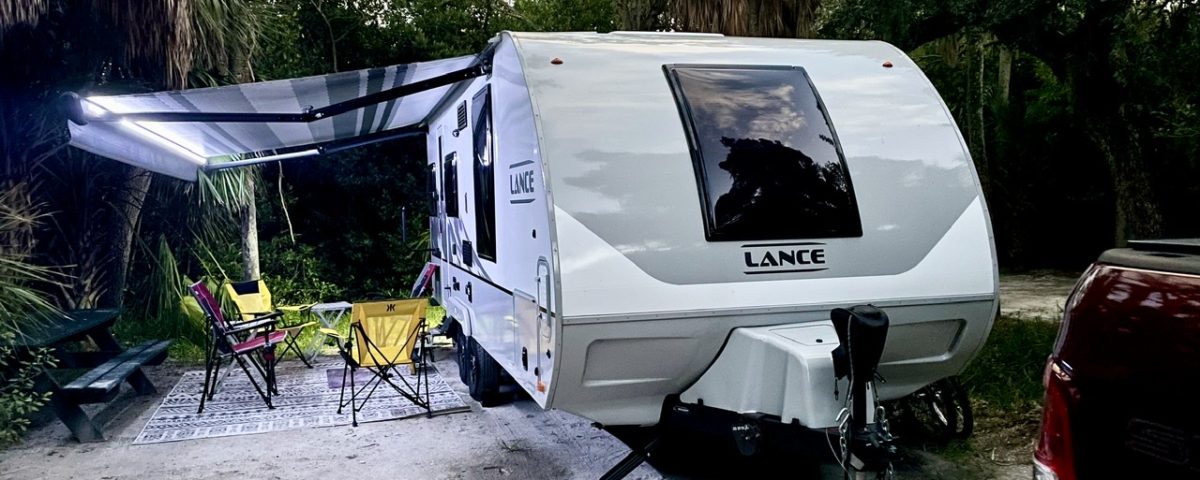Camper Storage, A First
Our new T@B 400 will be resting at a storage facility for the winter. This is a first for us because our T@G was always in our relatively warm basement. So, we will use this post as a camper storage checklist each year as we retire our camper for the winter.
Storage Checklist
1. Winterize the Fresh Water System
It is most important to ensure the camper’s fresh water system is adequately prepared for storage. If you reside in a climate that does not go below freezing, you can just drain all the water from the camper. If, however, temperatures will go below freezing, then additional steps are necessary. Additionally, we have a separate post for how we prepared our camper for freezing temperatures, Winterized our Camper Water System .
2. Have a Plan for Keeping the Battery Charged
Secondly, it is important to keep the battery charged. A charged battery can withstand sub-zero temperatures, but a drained one can be destroyed in temperatures below freezing. Therefore, it is important to keep a good charge on the battery. There several ways to address this: removal of the battery, providing a trickle charge, keeping it on shore power, or periodic charging of the battery.
Because we are storing our camper close to home, we will do periodic charging of the battery. We will store it with the battery kill switch off because it ensures there is nothing to draw energy. So, I have put reminders on my calendar to check the camper and battery every couple of weeks.
Periodic Power Monitoring
a) First, turn on the power at the battery kill switch and check the power level of the battery at the information panel.
b) If it needs a charge, connect to shore power to bring it up to a fully-charged level. Note: the power at the battery kill switch must be on to charge the battery.
c) When the battery has a full charge, disconnect the power and turn the battery kill switch back to off.
Note: when the camper is taken to storage, the battery should be fully charged.

3. Remove All Food From the Camper
It is very important to remove food from the camper because it attracts insects and wildlife. Also, be sure to remove all canned and bottled items because they could freeze and burst. Ensure that the microwave and stove are clean so there is not anything that would produce food odors.
4. Clean the Camper
Wash the exterior and clean all the inside surfaces. Vacuum the floor and remove any stains with soapy water. If the floor is damp from cleaning, leave the windows open to allow ventilation while it dries.
5. Remove linens and all fabrics
We removed all sheets, blankets, pillows, towels, etc. We also removed our cushions and mattresses because we have read that they can sometimes be ruined by wildlife. This may be overkill, but we don’t want to take any chances of them getting damaged.
We have a visor that we will also need to spray with Kiwi Camp Dry to have it ready to repel water and make it easier to clean in our next season of camping.
5. Turn off Everything
a) Turn off the refrigerator by turning the setting to zero. Leave the refrigerator door open and put an open box of baking soda inside.
b). Make sure all lights, Alde System, range burners, television, and DVD player are off. Also, ensure that both fan switches are off.
c) Turn off the propane at the valve.
d) Turn off all power to Camper by turning the kill switch to off. (Battery image on top of switch appears upside down.)

6. Final Steps
a) Ensure that the Camper is stored in a level position and stabilizers are down.
b) Close and lock all windows. Also, close all of the shades.
c) Place the cover over the air conditioner vent.
e) Place rodent repellent in camper. We chose the one (see link next) below based on a recommendation on a Facebook group.

f) Place a moisture absorber in the camper because it will help to prevent corrosion, mold, and mildew. The product below was in stock at our local Walmart (link) in the RV section.

g) Vent the Fantastic Fan 1/4” because nüCamp recommends it in the Manual.
h) Remove trailer hitch from SUV and place in storage unit.
i) Close and lock storage unit.
Camper Storage is done!
Our Storage Environment
Our camper will be in an unheated storage unit, so we will not have to consider any type of cover for it. But, if it were outside and subject to UV rays and the elements, we would need a cover. However, it is my understanding that one should be aware of extra moisture it may cause in some climates.
I had a lot of angst about getting our camper installed in the very tight space we have, but my husband got it in with the first try. I was so impressed!

So, we have tucked our new baby away for the winter and are at home planning our next adventures.
Hurry, hurry springtime!


